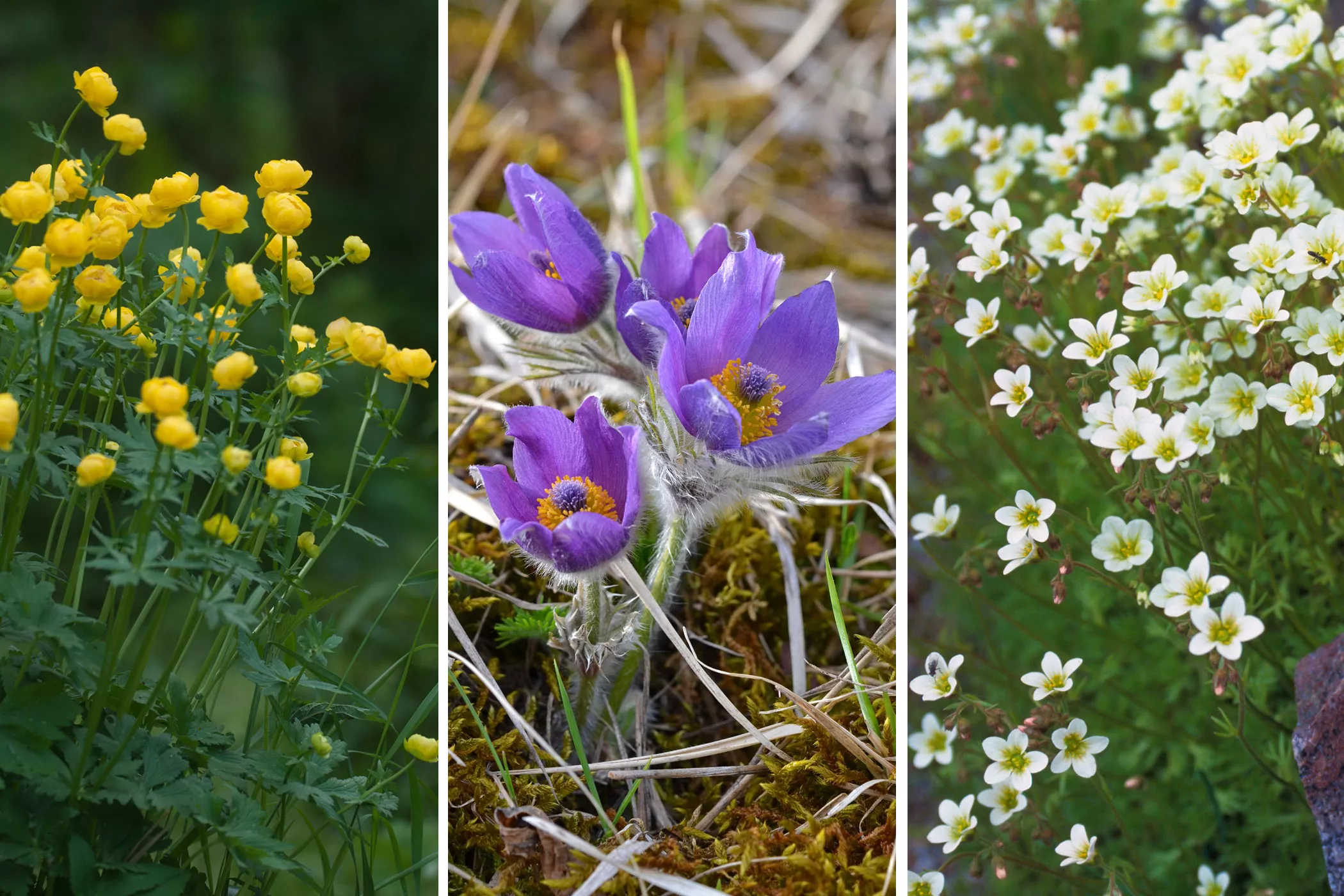
Perennials that start blooming in early spring bring something to look at in an otherwise just waking up garden.
Perennials that bloom in spring compete brilliantly with onion flowers. Both of them should be planted in the garden, so that the pollinators who wake up get food and people enjoy the eyes.
The flowering time of early perennials depends on the species and variety, but above all on the place of growth. The time varies each year depending on the snow melt.
If an early and warm spring comes, the flowering may surprise you already in flowerbeds and along walls. In a shady place, the same Sortti may bloom even weeks later.
We gathered ten options of early blooming perennials. Will any of these make it to your garden?
Perennials bloom in spring
Pale Christmas rose (Helleborus niger) sometimes blooms even in the middle of the snow, but at the latest in April-May. There are many varieties and their height varies, but usually the species grows about 30 centimeters high. Christmas roses thrive in a semi-shaded place, in humus-rich and nutrient-rich soil.
Cowslip (Spring primroses) is a harbinger of spring, one of the earliest spring bloomers. The yellow or orange flowers usually open in May, but there is often enough flowering until mid-June. A low-growing perennial 10–20 cm tall thrives in sun to partial shade. The species likes permeable, well-limed soil. Primroses spread by seeding into their surroundings.
Garden frost flower (Pulsatilla vulgaris) is a low-growing, 20–30 centimeter tall, very early blooming perennial. Flowering often starts already in May, but may be delayed until June. The buds are “hairy”, and blue or purple flowers open from them. Cold flowers thrive in sunny places, in sandy, permeable limed soil.
Spring marigold (Omphalodes verna) is an attractive small-flowered perennial growing to about 10 centimeters. The sky-blue flowers open in May-June and form a blooming carpet in the garden. The growing place should be semi-shaded and the soil rich in humus and permeable. The plant does not tolerate heat or deep shade. The spring marigold spreads on shoots in its place of growth.
Herttavuren shield (Bergenia cordifolia) is an evergreen 30–50 cm tall perennial with shiny thick leaves. Lilac flowers emerge from the middle of the leaves at the turn of May-June, the flowering lasts a long time. Vuorenkilpi thrives from sun to shade. Growth is most luxuriant in humus-rich soil. The look of the plant will be neater if you cut off the flowers after they wither.
Little winter (Vinca minor) is an evergreen ground cover plant that grows 10–15 centimeters high. The press is beautiful, glossy. Blue, lilac or white flowers open in May-June. The plant thrives best in semi-shade to shade. In particular, the growing areas exposed to the spring sun should be protected until the surrounding plants shade the winter soil. The soil in the growing area should be humus-rich and limed. The species spreads by means of driftwood.
Moss slime (Phlox subulata) is a low, 5–10 cm high, abundantly flowered species that spreads easily. The flowers can be white or have shades of blue and purple. Flowering time is May-June. The plant thrives in a sunny plant site in permeable, sandy soil. When the plant becomes shriveled from its center, it should be divided. Ants spread the moss seeds, so seedlings may also be found in rock crevices.
On Rönsytiera (Tiarella cordifolia) blooms in semi-shady places in May-June with creamy white petals. The leaves are light green and the flowers rise above them like clouds of dust. Tiarella grows about 15–25 centimeters tall. The best place to grow is in light shade, but the species can also survive in the sun if the soil is moisture-retentive. The soil should be slightly acidic.
Mattress breaker (Saxifrage Arendsii-Ryhmä) is an attractive species that spreads wildly in its habitat, only 5–10 centimeters tall. Flowering time is May-June. The growing place should be sunny and the soil should be dry, sandy and with scarce nutrients. Divide the plant when the rosettes start to brown in the middle. There are many varieties of the species available. A single seedling can be seeded to give rise to a large plant.
Read also Anna.fi: In the opinion of museum director Julia Donner, the garden is thought of too much as a picture that should remain perfect
Meadowsweet (Trollius europaeus) is a yellow-flowered perennial that grows 50-70 centimeters tall. The flowering time is at the beginning of June, but depending on the arrival of spring, it may bloom even earlier. Kullero is suitable for a sunny or semi-shady place to grow. The soil should retain moisture and contain humus. Coots thrive on ditch banks and flooded meadows.
Finnish perennials of green areas used as a source (Taimistoviljelijät 2023).
Source: kotiliesi.fi


